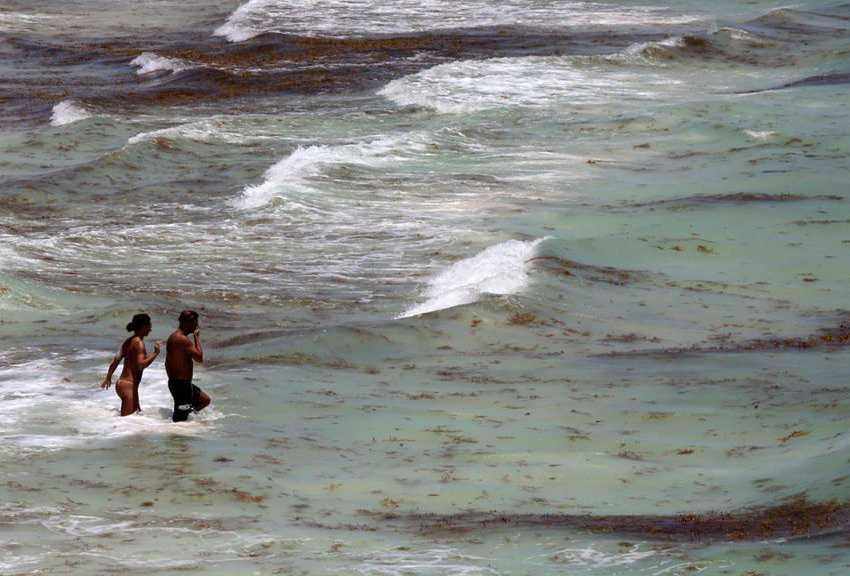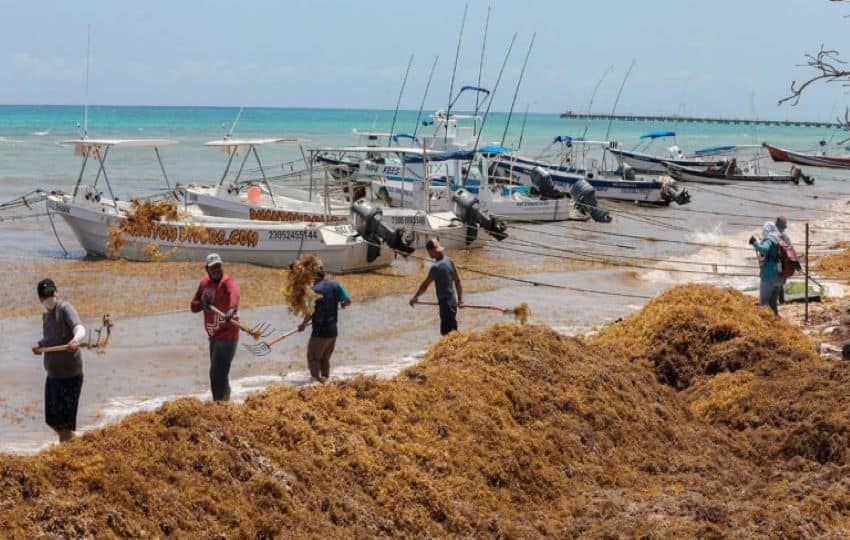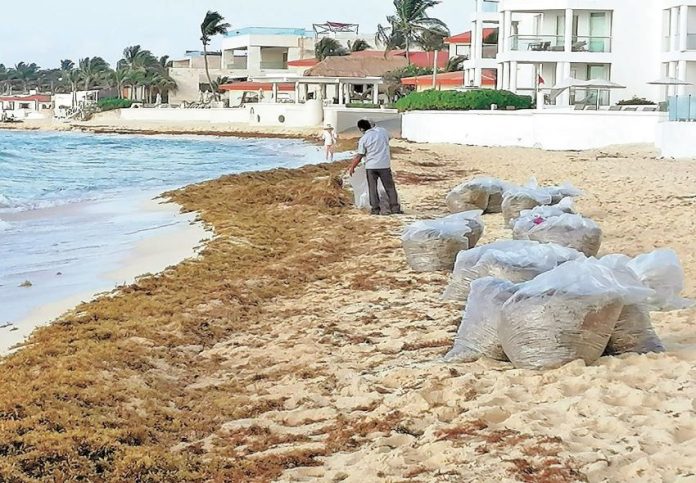The annual sargassum season is well and truly underway: large quantities of the seaweed have washed up on beaches in Quintana Roo destinations such as Playa del Carmen, Tulum and Cozumel.
Tourists are encountering hundreds of tonnes of the unsightly seaweed on beaches in Tulum, according to a report by the newspaper El País.
The beaches in Mahahual and Xcalek, located in the south of the state, are also currently affected by large amounts of sargassum, which emits a fetid odor as it decomposes.
The chief of the Cancún sargassum monitoring network told El País that there is so much sargassum that containing it is impossible.
“We have a significant arrival. In a single day, millions of cubic meters [of sargassum] can arrive, which translates into thousands of tonnes. Managing it is very complicated,” Esteban Amaro said. “… Collecting it [all] isn’t humanly possible.”

According to the monitoring network’s most recent sargassum map, there are abundant quantities of the weed at 20 beaches in Quintana Roo and moderate amounts at 32 others. No beaches currently have excessive levels.
As is the case every year, brigades of workers are clearing the plant from affected beaches while navy vessels are removing masses of it from the sea and installing barriers to stop it from reaching the coast. It can be frustrating work.
“They’re removing a lot of sargassum, but even though they clean [the beaches] in the morning, it accumulates again and it might be necessary to collect it again in the afternoon,” Mara del Rayo Ramírez, a tourism worker in Playa del Carmen, told the EFE news agency.
The annual arrival of sargassum on Quintana Roo’s famous white sand beaches is a recurring nightmare for tourism-sector entrepreneurs but even more distressing this year because they are trying to recover from the sharp coronavirus-induced slump in 2020.
In order to attract tourists to beachfront hotels, restaurants and bars, they have little choice but to spend money on hiring temporary workers to remove the sargassum.
“It doesn’t only have a negative effect on tourism,” Amaro, a marine biologist noted. “When it decomposes, it releases toxic organic substances that affect coral reefs and marine fauna and flora that live along the coastline.”

He said that larger quantities of sargassum have been reaching the Quintana Roo coastline in recent years due to higher ocean temperatures caused by global warming.
“[Climate change] changes the sea currents, the winds and the temperature of the sea, which encourage the growth of sargassum,” Amaro said.
He also said that chemicals used in agriculture, industry and mining flow into the ocean via rivers and provide nutrients that help it reproduce.
The worst year on record for the arrival of the seaweed in Quintana Roo, most of which drifts up from the southern Atlantic Ocean, was 2015, but marine biologists and other experts believe that 2021 could be even worse.
“At the moment in the Lesser Antillles, there is an incredible amount of sargassum that can’t be managed. The trend is that it [first] arrives [at the start of] spring, increases in April and there is a significant peak in May. It will increase even more in quantity and frequency in the summer,” Amaro said.
